
For more than 100 years, we have enjoyed disinfected water flowing through our public water systems, and without a second thought we drink tap water without fear of contracting cholera or other deadly waterborne diseases. While disinfected water benefits the general welfare of humans, it has proven lethal for our fish and the billions of beneficial bacteria growing in our aquariums.
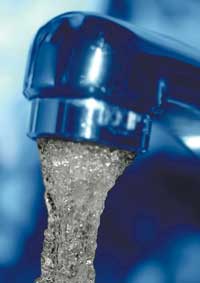
The amount of tap water disinfection was regionally controlled until 1974 when the Environmental Protection Agency (EPA) created the federal Safe Drinking Water Act (SDWA). The SDWA was amended in 1986 and again in 1996. The significance of this health-oriented legislation is monumental to the aquarium hobby.
Since the late 1800s, disinfecting water was relatively easy to achieve with the injection of a small amount of gaseous chlorine. Chlorine (Cl2) is highly unstable in water, with a half-life of about five hours, and aquarists learned to remove it either through vigorous aeration, passing it slowly over activated carbon or simply letting it sit to “off-gas” overnight prior to use. Later, it was discovered that a colorless, crystalline compound, sodium thiosulfate (Na2S203), instantly removed chlorine and did not harm fish. Only a small amount of the substance was needed to eliminate chlorine, so manufacturers packaged diluted and easy-to-use sodium thiosulfate called “dechlor,” which for many years satisfied the needs of the aquarium hobby.
Invisible Killers
Because chlorine is extremely unstable and dissipates quickly from water, chloramines were developed and are now primarily used to maintain water quality in pipelines that are often quite old and extend for many miles. Chloramine (NH2Cl), an inorganic compound that is a combination of chlorine and ammonia, has been used for more than 90 years. But its proliferation began in the mid-1980s. Of the three types of chloramine used in drinking water, monochloramine, comprised of chlorine and ammonia, is most often applied to public water systems.
Chloramines received a terrible reputation when water utilities added the compound and failed to adequately educate the public because it resulted in massive tropical fish deaths for no apparent reason. The Internet as we know it today was not available then, so aquarium publications, fish clubs and pet shops did their best to spread the word for coping with this problem.
Chloramine is an invisible compound that fish take directly into their bloodstream through their gills. Fish exposed to this compound experience stress, damaged and burned gills, erratic behavior and sometimes even jump out of the aquarium. It is a horrible, yet preventable, death. Fish seen gasping at the water surface with rapid, labored breathing could be suffering the effects of chloramine poisoning (especially if these symptoms occur following a water change). If a chloramine conditioner was not used, immediately administer the correct dosage. In this case, the chloramine probably has already killed many (if not all) beneficial bacteria in the substrate and filter. If possible, move your fish to a well-cycled aquarium while the affected aquarium goes through the nitrogen cycle again.
Another invisible killer is excessive levels of heavy metals, such as zinc, copper and lead, that could possibly leach into the water from galvanized or copper pipes. A small amount of these metals are required for normal metabolic activity, but too much is a bad thing. More heavy metals tend to collect in water that has been motionless in pipes for extended periods of eight or more hours.
To help reduce heavy metal concentrations, always run about a gallon of water into a bucket before introducing any water to an aquarium. I use the bucket water for houseplants, so it is not wasted.
Water Conditioning
Water quality is singularly the most important aspect of aquarium management. Regularly conducted partial water changes are essential for the health and welfare of our fish and aquatic organisms. Conditioning (also called treating) aquarium water would hardly be an issue if regular water changes were not necessary. Water districts obtain water from nearby lakes, rivers and sometimes wells.
The amount of disinfectant added to public water systems depends on many factors. Even if it can’t be tasted or smelled, it can still be deadly to fish and should be eliminated. I recommend checking with a locally owned pet shop or the water utility in your area to determine the degree of chloramine in your water. Knowing the parameters of your tap water will assist you in selecting the correct type of water conditioner for your aquarium.
The term “water conditioner” is generic and does not specifically mean chlorine or chloramine treatment. For example, some water conditioners, such as black water or buffering tonics, contain nothing to mitigate the effects of chloramine. Make sure to carefully read the label before purchasing.
Water Conditioner Triumvirate
Three types of commonly used water conditioners:
Dechlorinator
Instantly removes chlorine but leaves ammonia and heavy metals.
Chloramine Neutralizer
Instantly removes chlorine and either binds the ammonia molecule, rendering it harmless, or converts the ammonia to an inert compound. Some brands also neutralize heavy metals.
Complete Conditioner
Eliminates chlorine, neutralizes ammonia, detoxifies heavy metals and eliminates copper. Also, provides pH buffering, electrolytes and protection of fish slime coats.
Breaking the Bond
Aquarium management would be a breeze if we only had to eliminate chlorine. But with chlorine and ammonia bonded to create chloramine (NH2Cl), we must first divide the chlorine and ammonia bond and conquer each separately. Almost all water conditioners break the bond and immediately neutralize the chlorine, but harmful residual ammonia remains and must be neutralized.
Measurable ammonia is able to linger for up to 12 days following the chloramine division, and this is why the technique of leaving water to sit overnight does not work. Aquatic suppliers market water conditioners of various chemical compositions to address the chloramine problem. Some simply dechlorinate the water using sodium thiosulfate (Na2S203), which leaves ammonia. Other types eliminate the chlorine and bind the ammonia molecule, rendering it harmless.
Aquatic companies have done a commendable job supplying the hobbyist with a plethora of fine water conditioners.
Establishing a New Aquarium
Chloramine is not an issue when initiating the “fishless cycling” technique. When setting up a new aquarium, you only need to add dechlorinator, and the ammonia will be consumed, along with any additional ammonia necessary to complete the approximately six weeks of aquarium cycling.
However, any water added during the cycling period to replace evaporation or for partial water changes must be treated for chloramines. The chlorine in untreated tap water will kill beneficial bacteria in your aquarium, thus necessitating a restart of the cycling process.
Partial Water Changes
If properly managed, a weekly 10- to 20-percent partial water change is not a problem with water containing chloramines. Many hobbyists use automatic water-changers or garden hoses to conduct partial water changes with untreated replacement water flowing directly into the aquarium. Before starting aquarium maintenance, turn off the filter and unplug the heater. As the water enters the aquarium, slowly drip water conditioner into the aquarium. After turning off the tap water, swirl the aquarium water with your hand to mix the water and conditioner. Reconnect the heater and plug in the filter. The instantly neutralized chlorine is no longer a threat, and the small amount of ammonia introduced will be consumed by the enormous bacteria colonies living in the filter and substrate.
I safely do up to 50-percent water changes in aquariums containing only a couple of larger fish, but these aquariums have massive filtration capable of quickly eliminating the ammonia left over from the severed chloramine bond.
Bottom Line
Selecting the best water conditioner requires examination of your aquarium and the public water supply. All three types of conditioners reliably provide basic water conditioning due to the high quality-control standards of manufacturers.
Dechlorinator. For a lightly stocked, heavily filtered aquarium, consider using a basic dechlorinator. This applies as long as your water supply is not drawn from a heavy-metal-enriched source or is not supercharged with an extraordinarily high percentage of chloramine. Normal chloramine levels range from 1 to 2 parts per million (ppm), but 4 ppm is not uncommon.
Chloramine neutralizer. Heavily stocked aquariums with less-than-perfect filtration should be treated with a chloramine neutralizer. Adequate filtration only meets the minimum manufacturer’s gallon-per-hour (GPH) recommendation. Incidentally, GPH is calculated by manufacturers using a new filter with new filter media. With only adequate filtration, it is safer to conduct smaller, but more frequent, water changes for heavily stocked aquariums or where the water supply is undesirable due to heavy metals or high chloramine concentration.
Complete conditioner. For delicate or recuperating fish, consider one of the complete conditioners. Use a complete conditioner if the water supply is laden with heavy metals or has a high percentage of chloramine.
Disinfected tap water is beneficial for humans but harmful to our aquatic organisms. Check with your water utility and local pet shop to determine the best water conditioner for your aquarium.
 Red Worms
Q. I’ve seen advertisements for red worms as a food for fish
Red Worms
Q. I’ve seen advertisements for red worms as a food for fish
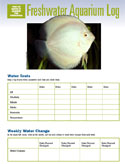 Aquarium maintenance logs for freshwater, saltwater and reefkeeping aquarists
Thank you for signing up for the FishChannel newsletter, the
Aquarium maintenance logs for freshwater, saltwater and reefkeeping aquarists
Thank you for signing up for the FishChannel newsletter, the
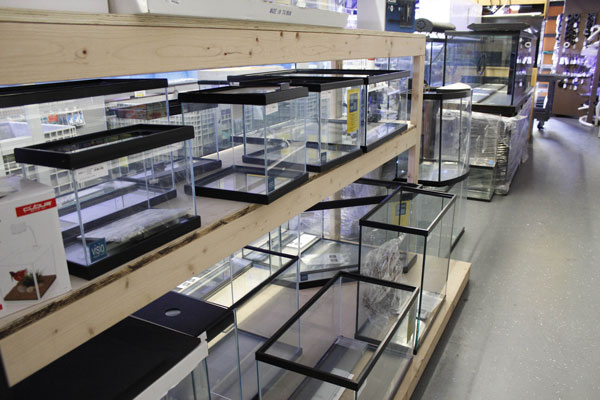 Five Tips for Freshwater Aquarium Success
You spent countless hours researching the latest products to
Five Tips for Freshwater Aquarium Success
You spent countless hours researching the latest products to
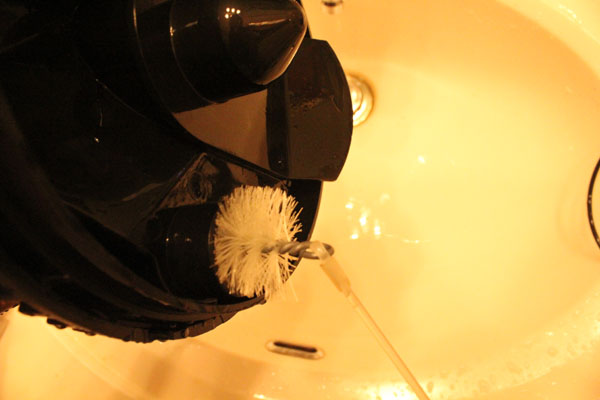 How to Maintain Your Aquarium Filter
Aquarium filtration saw monumental advances in technology du
How to Maintain Your Aquarium Filter
Aquarium filtration saw monumental advances in technology du
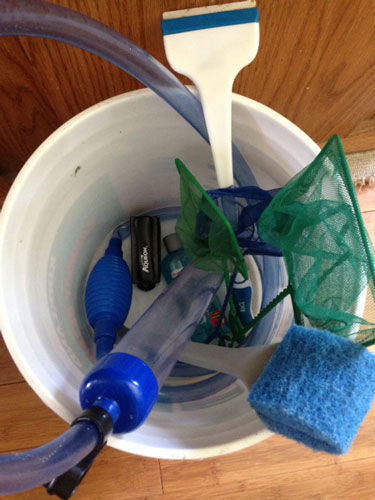 What to Keep in Your Aquarium Maintenance Bucket
It is too easy for hobbyists, especially new ones, to become
What to Keep in Your Aquarium Maintenance Bucket
It is too easy for hobbyists, especially new ones, to become
Copyright © 2005-2016 Pet Information All Rights Reserved
Contact us: www162date@outlook.com